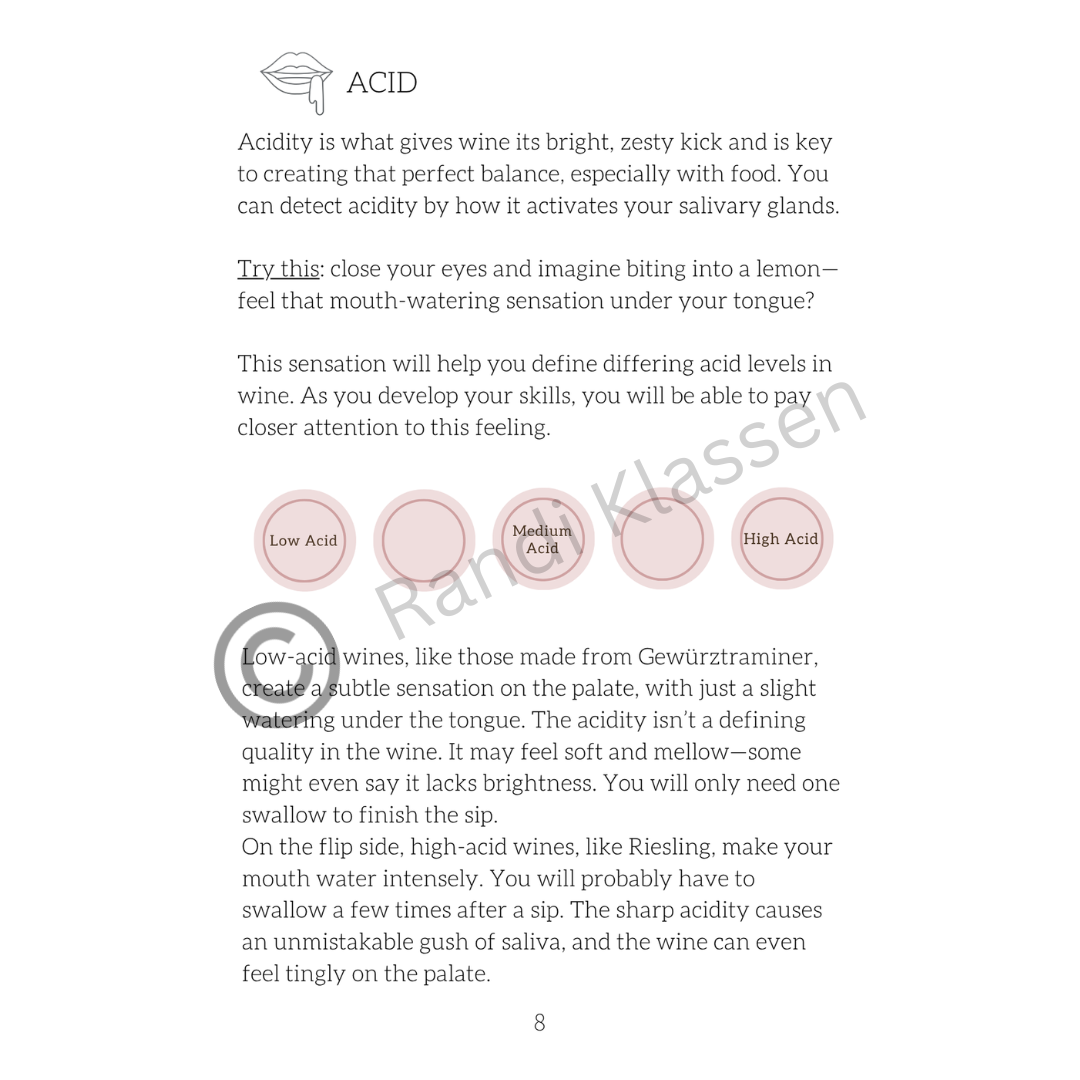So You Want to Blind Wine Taste Like a Pro?
Here’s the Workbook That’ll Actually Help You Do It.
By Randi Klassen, DipWSET
Blind tasting isn’t just a party trick for sommeliers in movies. It’s one of the most valuable skills a wine student or enthusiast can develop. Whether you’re chasing the WSET Level 2 or Level 3, preparing for CMS exams, or simply want to level up your palate, the ability to confidently assess a wine without seeing the label is powerful. But also… kinda terrifying at first.
That’s why I created the Blind Tasting Journal — a workbook designed to teach you how to taste wine like an actual human being, not a robot. Because let’s be honest: “Just write what you smell” isn’t exactly helpful when you’re staring at a glass and all you’re getting is “wine.”
I was so frustrated by the lack of actual fact in blind wine tastings. Maybe it is the Aquarius in me, maybe it is the scientist in me, or maybe it is because I approach things with an insane amount of logic - but nothing anyone said would click. My instructors would tell me that a wine was high acid, and I was just supposed to take their word for it? No way - that is not the Randi approach. So I broke it down, sensation by sensation, in a logic based approach, with key “body tells” that helped me to identify a wines color, nose, and palate with an extremely high accuracy.
This article will give you a taste into that process and give you some free content from the book - including my page on tasting for acidity. If you want to learn more, you’ll have to support my wine drinking habit by purchasing the journal, following me on tiktok/ instagram, or subscribing to my email list.
Why Blind Tasting Feels So Impossible at First
We’ve all been there. You’ve poured a glass, set a timer, and you’re ready to go full SAT mode. But nothing’s coming to mind. Is it lemon? Is it lime? Is it just your dish soap?
Here’s the truth: you don’t need a perfect palate. You need a system.
In blind tasting, it’s not just about “guessing the grape.” It’s about gathering evidence — one data point at a time — and then assembling it into a conclusion. The Blind Tasting Journal trains you to do just that.
What's Inside This Journal (and Why It Works)
This isn’t a blank notebook. It’s a structured workbook with guided instruction, practice space, and practical tips rooted in real exam experience. Blind wine tasting is hard - its like doing a jigsaw puzzle, but you have to make each puzzle piece before you can put the pieces together.
Step 1: Identify the Components — aka, the Wine’s Puzzle Pieces
See Page 8 from the wine guide.
You’ll learn how to break a wine down through its appearance, nose, and palate. But I don’t just say “write down the aromas.” I walk you through how to train your brain to retrieve specific smells. I also teach you how to calibrate your sense of acidity, sweetness, alcohol, body, and tannin — one of the most intimidating parts of blind tasting.
You’ll also track your accuracy over time. Are you consistently under-calling acidity? Over-calling alcohol? This journal allows you to track your progress and reflect on your palate.
Step 2: Connect the Ideas — aka, Put the Puzzle Together
Once you’ve identified the building blocks, the journal teaches you how to start interpreting those clues. This section introduces you to my Funnel Method — a structured approach to narrowing down the possibilities, starting broad and zooming in.
Let’s say you’ve got:
High acid
Medium alcohol
Pale color
Lime, green apple, and wet stone on the nose
Hmm... we’re probably in Old World territory. Likely a cool climate. Could be Riesling. Could be Chablis. Could be Assyrtiko. The Funnel Approach teaches you to start with all of the possibilities and then narrow it down using a deductive approach — based on structure not just aromas.
Practice Like It's Game Day
The journal includes 88 pages of practice space formatted exactly like the WSET Systematic Approach to Tasting (SAT). Whether you're writing “dry notes” (quick assessments in 8 minutes) or full tasting notes with quality and age assessments, this format preps your brain for real exam timing.
And yes, there’s a cheat sheet of descriptors and a “Classics” section — a curated list of key grapes and benchmark regions you need to know. Think of it as your blind tasting syllabus and shopping list all in one.
Who This Journal Is For:
WSET Level 2 & 3 Students: Learn to decode SAT structure, practice blind, and master exam language
CMS Candidates: Use as a drilling tool for deductive tasting and varietal calibration
Curious Wine Lovers: Build palate confidence, taste with intention, and actually remember what you drank last night
Study Groups: Get on the same page (literally) with your tasting circle and track progress together
Why This Journal Works
Unlike most tasting journals, this one teaches. It’s not just about recording what you smell and taste — it’s about learning to interpret those things meaningfully. The exercises inside helped me pass D4, D5, and D3 of the WSET Level 4 Diploma — and I built it with all of that experience in mind.
Blind tasting is a skill. You can learn it. You can sharpen it. You just need the right tools and a little strategy.
Ready to Train Your Palate?
Grab your copy of the Blind Tasting Journal on Amazon today and let’s start turning wine into wisdom — one glass at a time.
Cheers to tasting smarter,
Randi Klassen, DipWSET
Wine Educator | Creator of Paired Tastings | Tired of bad wine advice since 2016






